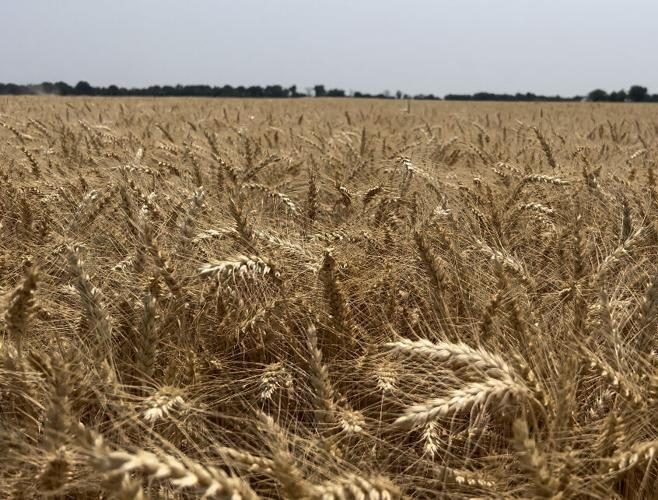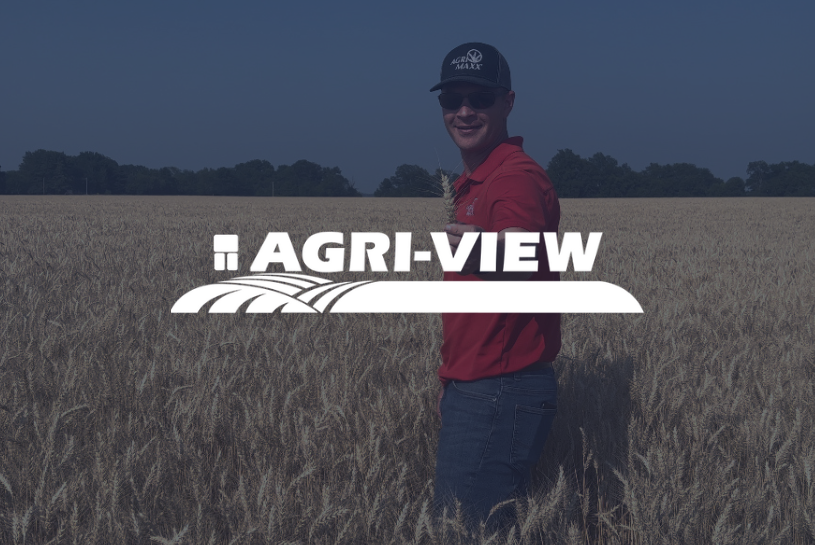
As the harvest has wraps up across the United States, AgriMAXX Wheat Company’s President Matt Wehmeyer couldn’t be prouder of the results coming in from this year’s crop.
“The harvest was tremendous over a wide area for the Soft Red Winter crop from Missouri to the east. It was remarkable. Many customers reported record-breaking yields in several states. We’ve had growers that have field averages of over 150 bushels per acre, which is tremendous,” said Mr. Wehmeyer, who oversees research, product development, production, agronomy, sales and marketing for the Mascoutah, Illinois-based high-performance wheat company. With distribution in 26 states of its Soft Red Winter, Hard Red Winter and newer Soft White Winter Wheat, AgriMAXX is the largest independent, family-owned wheat company in the U.S.
Bin-busting yields brought a record number of 100, 125 and 150 Bushel Club members into AgriMAXX Bushel Clubs this year. The company’s Bushel Clubs recognize elite groups of wheat growers who achieve over 100, 125, 150 bushels per acre field averages.
But 150-bushel averages, amazing as they are, don’t show the whole picture, Mr. Wehmeyer pointed out. “Even if they didn’t average it, some of our growers saw big parts of their fields generating over 150 bushels per acre,” he said.
In a state like Illinois where the USDA-calculated average wheat yield was 79 bushels per acre for 2022, what accounts for unheard of 150-plus bushel per acre harvests? It comes down to three factors: cooperative weather, excellent crop management by growers and AgriMAXX’s new varieties with vastly improved genetics, says Mr. Wehmeyer.
“Foundationally, you have to start with the right genetics to establish yield potential,” he said. “The new varieties we’ve advanced and commercialized display a new level of yield potential we have not previously seen.”
Moving the needle higher
“Every year we move the needle higher, incrementally. There are a lot of new genetics in the marketplace. The difference is the parent lines we are using. They just bring forth better yield potential, better disease resistance and heavier weights,” he said.
In 2021, AgriMaxx launched the AgriMAXX Defender Series and the AgriMAXX Heavyweight Series, special designations for varieties that display enhanced disease protection and superior test weight. The AgriMAXX Heavyweight varieties are developed for superior, industry-leading test weights. The AgriMAXX Defenders offer premium disease protection, combining superior disease resistance with elite agronomics for top yield potential.
“We previously thought 64 lb. test weight was best of the best. We’re now hitting 65-66-67 lb. test weights. For a lot of growers as they get back into the crop, we’re recommending the Heavyweight variety so they can experience the difference,” Mr. Wehmeyer said.

Double-crop profits, soil health gains
Across much of the Midwest, wheat has to compete for profitability against corn and soybeans. Corn and beans have been hard to beat in recent years, but more farmers are finding profits and soil health benefits with AgriMAXX wheat varieties, he said.
With new crop wheat prices around $7.50 per bushel, double-cropping 90 bushel-per-acre wheat after 35 bushel-per-acre soybeans is more profitable than growing 200 bushel-per-acre corn at current prices for next year, he said.
Several AgriMAXX varieties performed especially well this year, said Mr. Wehmeyer. “513 was outstanding for yield and test weight and brought several growers into our 150 Bushel Club. 525 produced averages in 160s and was phenomenal. 503 and 505 were very dominant as well for yield and test weight combinations.”
All the company’s varieties are regionally adapted. “Work with local Agrimaxx rep to identify which are a great fit for your region and farm needs and meet your farm’s goals and objectives,” he said.
Mr. Wehmeyer sees producers getting continually better at managing their crops. On top of strong genetics from AgriMaxx seed, they’re applying nitrogen and fertilizer carefully and preserving yield with disease and insect control.
“If we execute without mistakes and have good weather on our side, that’s when we have some bin buster crops. It’s not always easy. Any crop has its levels of difficulties. It’s not always intense management but intentional management — doing right things at the right time to get the most out of our investment,” he said.
Mr. Wehmeyer notes a growing trend of planting wheat behind cornstalks, especially in regions that have experienced corn drought. Genetics have greatly improved head scab resistance to work much better behind corn. When drought-damaged corn leaves nitrogen and fertilizer in the soil, growers are able to put those nutrients to use in their wheat crop. “That’s a good play for growers, economically,” he said.
In addition, there’s a lasting soil benefit and boost to other crops in the rotation when wheat is added. A multi-year University of Illinois shows that by including wheat in the rotation, corn yields increase 8-12 bushels per acre, depending on tillage methods, he said.
Another trend: As growers have built drying systems on their farms, they are cutting their wheat at a higher moisture content and drying it in their systems as opposed to letting in dry in the fields. “They can harvest sooner, preserve their wheat quality and plant their double crop sooner.”
Weather and trends change but growers’ interest in planting high-yielding wheat remains constant, said Mr. Wehmeyer. “Heavy weights have created a lot of interest and conversation for our varieties. The proof is in the pudding that we’re doing the right things.”
Read the article online at agupdate.com





